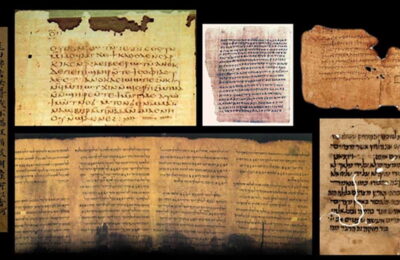Home | Bible Resources | Historical Books
The Book of Ruth: A Story of Loyal Love, Sovereign Providence, and Messianic Hope
Introduction
The Book of Ruth is a literary and theological gem nestled between the chaotic era of the Judges and the rise of Israel’s monarchy. Amid famine, foreign land, and fractured lineage, Ruth tells the story of a Moabite widow who clings to the God of Israel and walks a path of covenant loyalty that leads straight into the line of the Messiah. Against the backdrop of national apostasy and moral collapse (Judges), this quiet story of faithfulness and redemption unfolds with remarkable theological depth.
More than a romance, Ruth is a sovereignly orchestrated tale of hesed—God’s covenantal kindness—and a beautiful display of how God works through ordinary people to accomplish extraordinary redemptive purposes. Through Naomi’s bitterness, Ruth’s loyalty, and Boaz’s grace, we glimpse God’s unfolding plan to bring forth a Redeemer who will restore hope not only to Israel but to the nations.
1. Title, Author, and Date
Title: The Hebrew title is Ruth (רוּת), the name of the Moabite woman who becomes the book’s central figure. The Greek (LXX) and English titles are the same.
Author and Date: Jewish tradition attributes authorship to the prophet Samuel, though the text does not name its author. Internal evidence suggests it was written during the early monarchy (possibly during David’s reign, ca. 1010–970 BC), as the genealogy concludes with David (Ruth 4:17–22).
Historical Setting: The events of Ruth take place “in the days when the judges judged” (Ruth 1:1, LSB), likely during a period of famine and moral instability—perhaps contemporary with Judges 6 (Gideon’s era). It is a theological bridge from Judges (covenantal failure) to Samuel–Kings (covenantal kingship).
Role in Redemptive History: Ruth functions as a transitional hinge in the metanarrative: it moves from chaos to covenant, from Israel’s tribal disintegration to God’s sovereign preparation of a Davidic dynasty—through a Gentile woman no less. It models God’s intention to bless the nations through Abraham’s seed (cf. Gen 12:3).
📊 Book Stats:
Chapters: 4
Verses: 85
Approx. Word Count: 2,500 (English)
2. Purpose and Themes
Ruth showcases God’s providential care and covenant loyalty through human agents, foreshadowing the coming Redeemer. It teaches that God’s redemptive plan includes the outsider, unfolds in suffering, and leads to lasting joy.
Central Theological Purpose:
To reveal God’s sovereign provision of redemption through covenantal faithfulness, even amid personal loss and national apostasy.
Major Doctrinal Themes:
- Providence of God: God orchestrates events for His redemptive purposes (Rom 8:28).
- Covenant Loyalty (Hesed): Seen in Ruth’s loyalty, Boaz’s kindness, and God’s overarching plan.
- Redemption: The go’el (kinsman-redeemer) motif typifies Christ’s redeeming work.
- Gentile Inclusion: Ruth, a Moabitess, becomes part of the messianic line.
Literary Features:
- Masterful Hebrew narrative marked by irony, repetition, inclusio (1:1–4:13), and careful chiastic structure.
- Key motifs: return (shuv), redemption (ga’al), kindness (hesed), and rest.
3. Outline
The book unfolds in four narrative movements, each showing God’s quiet but sovereign orchestration of events that lead from emptiness to fullness, exile to inheritance, and bitterness to blessing.
I. Ruth’s Loyalty in Loss (1:1–22)
A. Famine and Flight to Moab (1:1–5)
B. Death, Decision, and Departure (1:6–18)
C. Return to Bethlehem in Bitterness (1:19–22)
II. Ruth’s Humility and Boaz’s Kindness (2:1–23)
A. Providential Meeting in Boaz’s Field (2:1–7)
B. Boaz Extends Protection and Provision (2:8–17)
C. Naomi’s Renewed Hope (2:18–23)
III. Ruth’s Request and Boaz’s Redemption Pledge (3:1–18)
A. Naomi’s Redemption Plan (3:1–5)
B. Ruth’s Bold Request at the Threshing Floor (3:6–13)
C. Boaz’s Promise and Naomi’s Confidence (3:14–18)
IV. Ruth’s Redemption and Davidic Lineage (4:1–22)
A. Boaz Redeems Ruth at the City Gate (4:1–12)
B. Marriage, Birth, and Blessing (4:13–17)
C. Genealogy from Perez to David (4:18–22)
Canonical Flow: Ruth bridges the tribal chaos of Judges and the kingly hope of Samuel, advancing the messianic storyline from Abraham to David—eventually culminating in Christ (Matt 1:5–6).
4. Key Themes and Theological Contributions
Ruth is a theological portrait of loyal love and sovereign grace. It reveals God’s character as Redeemer, His plan to include the nations, and His providence in suffering.
Theological Contributions:
- Creation–Fall–Redemption: Ruth follows the pattern of exile (Moab), return (Bethlehem), and restoration (marriage and seed).
- Kinsman-Redeemer Typology: Boaz fulfills the law of levirate redemption, prefiguring Christ (cf. Gal 4:4–5; Eph 1:7).
- Gentile Inclusion in Covenant Blessing: A Moabitess is welcomed into Israel’s story, foreshadowing the gospel to the nations (Rom 15:12).
- God’s Providence in Suffering: Naomi’s bitterness becomes joy as God restores her through unexpected means.
📌 Memory Verse: Ruth 1:16 (LSB) — “But Ruth said, ‘Do not press me to forsake you in turning back from following you; for where you go, I will go, and where you sleep, I will sleep. Your people shall be my people, and your God, my God.’”
⚔️ Major Rebellions/Turning Points:
1. Naomi’s Bitterness in Suffering
→ Crisis of faith: “The hand of Yahweh has gone forth against me” (1:13).
→ Redemptive shift: Her emptiness becomes fullness through Ruth and Boaz.
2. Ruth’s Radical Loyalty
→ Cultural rupture: Ruth abandons Moab’s gods for Yahweh.
→ Redemptive trajectory: She becomes part of the royal messianic line.
3. The Kinsman’s Refusal
→ Legal tension: The nearer redeemer declines (4:6).
→ Providential solution: Boaz steps in, preserving the Davidic promise.
5. Christ in Ruth
Ruth typologically anticipates Christ through Boaz, the kinsman-redeemer who legally, lovingly, and sacrificially restores a Gentile bride—echoing Jesus’ redemptive work for the Church.
Christological Fulfillment:
- Boaz as a Type of Christ:
- A worthy man (2:1) → Jesus, the perfect Redeemer
- Willing to pay the redemption price (4:9–10) → Jesus redeems us by His blood (1 Pet 1:18–19)
- Marries the Gentile bride → Christ and His Church (Eph 5:25–27)
- Ruth as a Picture of the Church:
- Outsider brought into covenant
- Redeemed and fruitful through union with the Redeemer
Cross-Reference Chart (Optional Visual):
| Ruth | Fulfillment in Christ |
|---|---|
| Boaz redeems Ruth (4:9–10) | Christ redeems the Church (Eph 1:7) |
| Gentile bride joined to Israel | Church grafted in (Rom 11:17–24) |
| Seed leads to David | Christ, Son of David (Matt 1:5–6) |
6. Historical and Literary Notes
Ruth is a masterclass in narrative theology. It stands apart from the violent cycles of Judges, showcasing how God’s providence is often expressed through quiet obedience and personal loyalty.
- Genre: Historical narrative with theological intent
- ANE Context: The levirate marriage custom (Deut 25:5–10); gleaning laws (Lev 19:9–10)
- Covenantal Progression: Moves from individual redemption to national hope (Davidic line)
- Theological Message: God’s redemption weaves through personal faithfulness and divine sovereignty
👤 Key Characters:
- Ruth: Moabite widow who clings to Yahweh and is grafted into Israel’s covenant line
- Naomi: Bereaved Israelite woman transformed from bitter to blessed
- Boaz: Kinsman-redeemer and Christ-type, honorable and gracious
- Obed: Son of Ruth and Boaz, grandfather of King David
7. Applications for Today
Ruth calls believers to faithfulness amid suffering, to kindness over self-interest, and to trust in God’s providential hand, even when hope seems lost.
Discipleship Formation:
- Walk in loyalty even when the future is uncertain
- Trust God’s providence in seasons of suffering and waiting
Worldview and Ethics:
- Honor God’s design for family, land, and inheritance
- Embrace outsiders with grace and truth, reflecting gospel hospitality
Leadership and Mission:
- Lead like Boaz—with integrity, generosity, and courage
- See everyday obedience as a vessel for God’s kingdom purposes
8. Shoe Leather Discipleship Tie-In
This book shows us that even in the quiet corners of history, God is at work weaving redemption through faithfulness, courage, and covenantal love. Ruth reminds us that no person, no moment, and no act of obedience is insignificant in God’s redemptive tapestry. When we walk faithfully—whether we are gleaning in fields or standing at city gates—we can trust the Redeemer to do more than we ask or imagine.
Walk it out: Be faithful in the small things. Trust in the Redeemer. Reflect His kindness. And remember—restoration is always possible.







